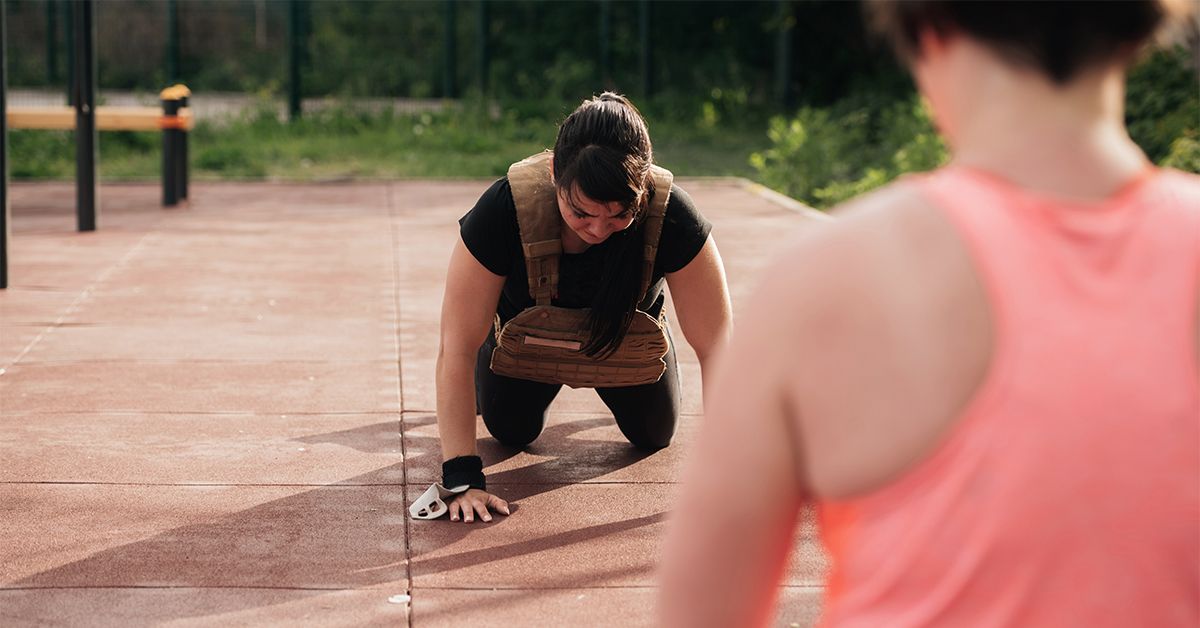– Weighted vests are popular and promoted for many health benefits.
– They can increase workout intensity and may boost cardiovascular fitness.
– Evidence for weight loss and other claimed benefits is limited and mixed.
Weighted vests have become widespread — on social media, in parks, and in gyms — along with many enthusiastic personal testimonies. Advocates claim improvements in posture, bone health, calorie burn, strength, and endurance. But the scientific evidence is limited and mixed, and whether a vest is worthwhile depends on your starting fitness, goals, and health status.
The research to date is small and varied, examining outcomes from sport performance and fat loss to bone density. Because of that, some clinicians don’t routinely recommend weighted-vest training in practice, while others acknowledge specific benefits: adding a load increases physiological demand, which can modestly enhance strength, power, and endurance compared with identical workouts without added weight.
One clear effect is higher exercise intensity. Wearing a vest during walking, running, circuit training, or bodyweight workouts increases oxygen uptake, heart rate, carbohydrate use, and total energy expenditure without necessarily disrupting gait biomechanics, making it a practical way to up the cardiovascular challenge of routine activity. Athletes may also use vests for sport-specific conditioning — for example, sprint work — to target performance gains.
However, for most people aiming to improve general cardiorespiratory fitness, standard consistent aerobic activity (about 150 minutes of moderate-intensity exercise per week) will provide substantial benefit. A weighted vest is an optional tool to increase intensity, not a required replacement for established exercise recommendations.
Weight loss effects are uncertain and likely depend on diet and overall lifestyle. A small pilot study in older adults with obesity found that combining a weighted vest with caloric restriction produced similar six-month weight loss to calorie restriction alone; those using the vest regained weight more slowly over two years. Researchers suggested the vest might help preserve resting metabolic rate during weight loss.
A Swedish study had participants with obesity wear relatively heavy vests (about 11% of body weight) for eight hours a day over five weeks and found reductions in fat mass and increases in lean mass without a significant change in total body weight. In that trial participants were instructed to keep their usual routines and simply wear the vests. The authors noted potential metabolic benefits from improved body composition. But heavier vests were also linked to increased sedentary time and more musculoskeletal complaints, suggesting discomfort or strain could discourage activity. That study compared heavy vests to lighter vests, so it lacked a non-vest control group.
Beyond cardiovascular intensity and possible compositional changes in certain contexts, many popular claims about weighted vests lack strong proof:
– Better posture: There’s little direct evidence that wearing a weighted vest corrects postural deviations. Vests might support posture when combined with targeted resistance or corrective exercises, but stretching and strengthening programs remain better-established approaches for posture improvement.
– Muscle growth: Adding load during activities such as stair climbing can increase muscular stimulus and support muscle maintenance or growth. Still, true hypertrophy generally requires progressive resistance training that loads muscles through their full range of motion; a vest worn during daily activities is not a substitute for structured weightlifting when the primary goal is muscle gain.
– Bone density: Mechanical loading can benefit bone health in principle, and some small earlier studies suggested that jumping plus weighted-vest protocols might prevent bone loss in postmenopausal women. But recent trials have been inconsistent. A 2025 JAMA study found neither weighted-vest training nor resistance training prevented bone loss associated with weight loss in older adults with obesity. No definitive human trials yet show that vests reliably increase bone mineral density.
Practical guidance and precautions
Weighted vests are versatile: they can be added to exercise sessions or worn intermittently during daily life to provide chronic load. Older adults may particularly gain from vest training when it’s incorporated into task-specific or velocity-based exercise programs, with evidence of improvements in muscle power, balance, and functional ability and reductions in fall risk when supervised appropriately.
General safety recommendations include starting light — often under 5% of body weight, and in many cases as little as 1% depending on fitness — and increasing load gradually. People with cardiovascular disease, uncontrolled high blood pressure, or active joint injuries (back, hip, knee) should consult a clinician before trying weighted-vest training because added load increases cardiovascular strain and joint stress. Those with balance problems should be especially cautious.
Weighted vests are not a miracle cure but can be a useful tool when combined with sensible diet, regular exercise, and medical care. If wearing a vest helps you stick to activity goals — for example, motivating you to get your weekly walks — it may be worth incorporating. The key remains consistency: whatever method best keeps you active and progressing is the most beneficial.




